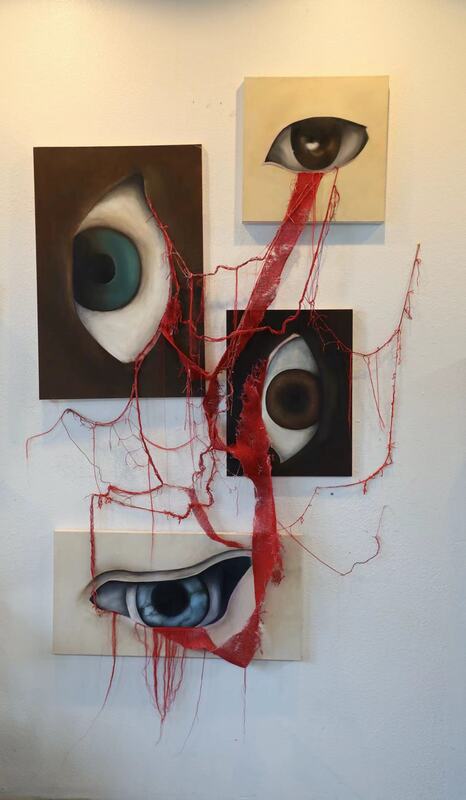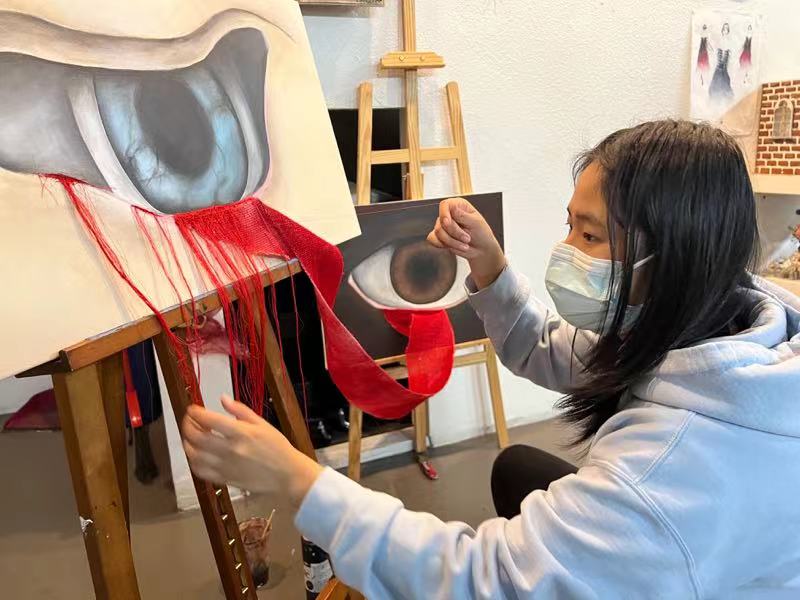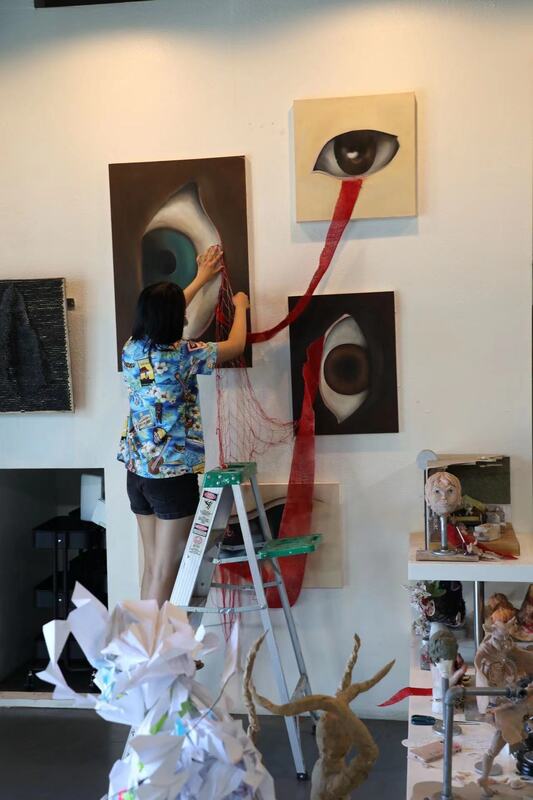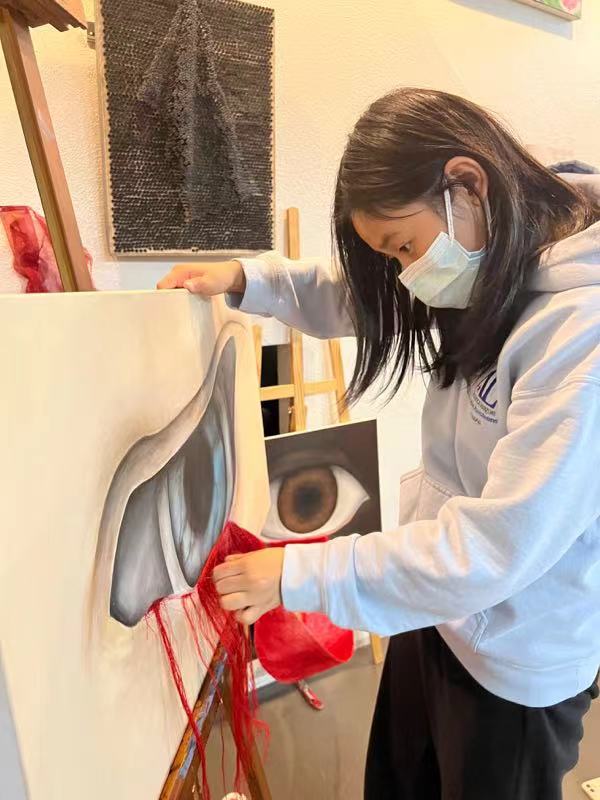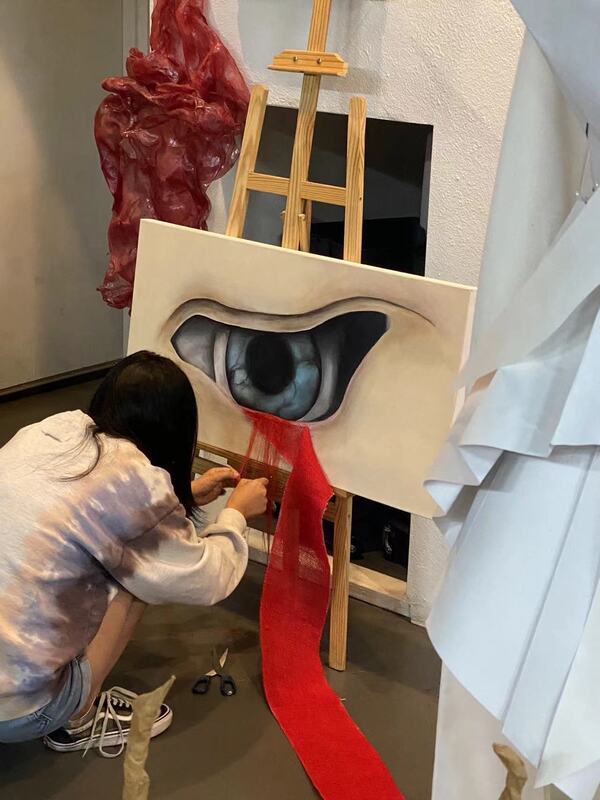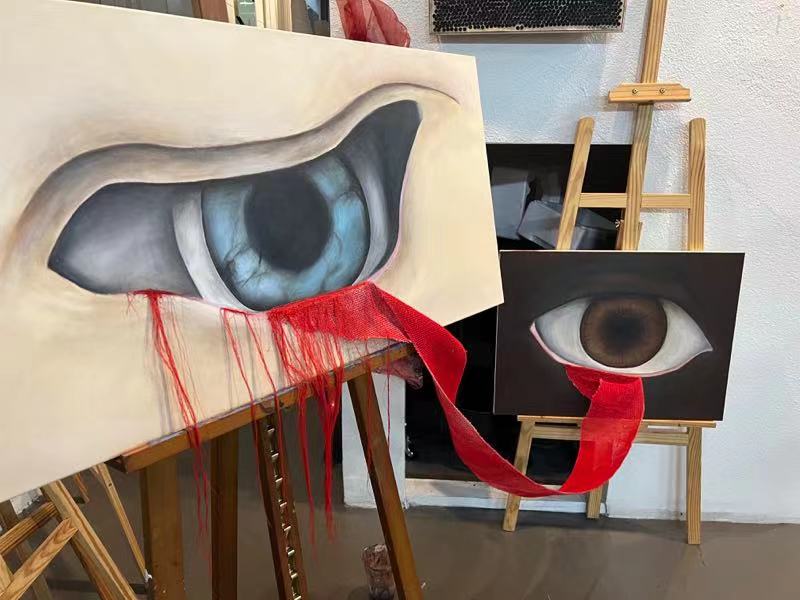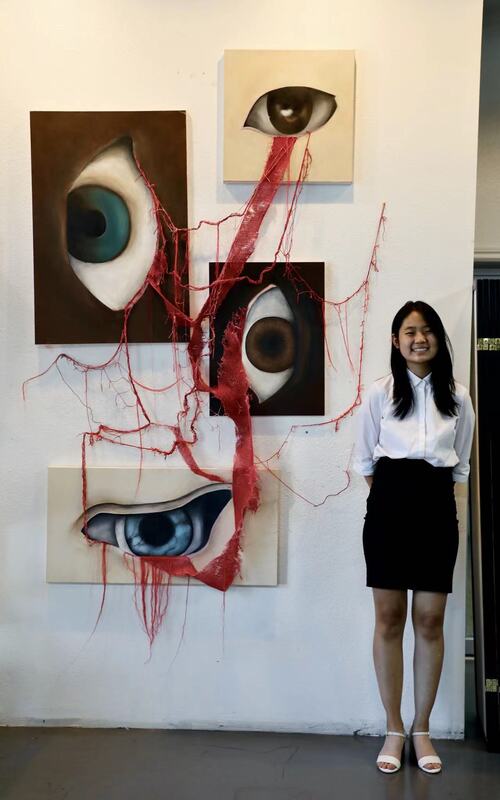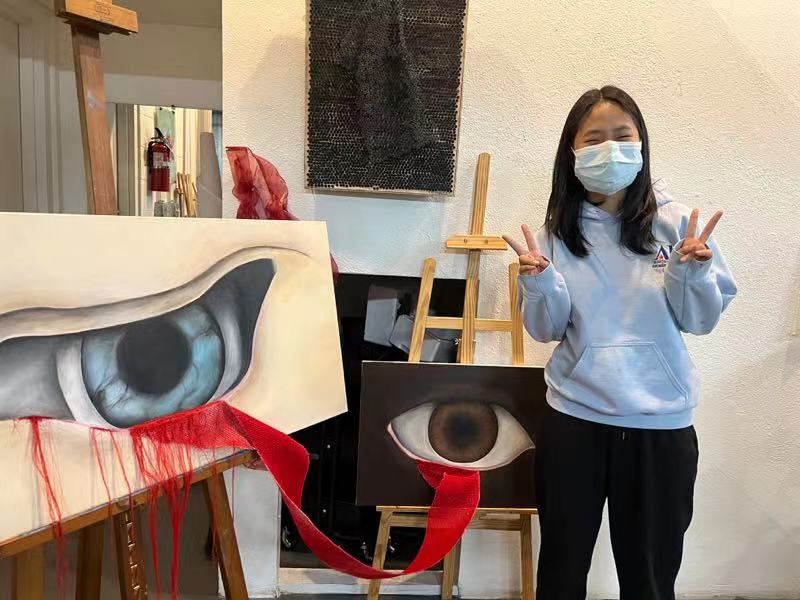|
In conversing with Laura about what she wanted to create next, originally the idea was about how despite our different skin colors or even our eye colors, we all bleed the same color. That idea eventually evolved into how we need to face certain situation now rather than later symbolized through the pain in the depicted eyes. (Violence, Covid 19, war, human suffering etc.…) In the piece, different materials make up the tears of blood. Each painting can symbolize a different type of pain experienced. According to Laura, the material that looks like netting represent how we are so caught up in the pain and we desperately want to escape hence why some of them are stretched away from the piece which represents “escape”. The rougher looking materials that are shredded represents the tough, hard days of someone’s life, when you just want to let go and scream at the top of your lungs from frustration or anger. The softer silkier or stringy looking material represents the uncontrollable tears that are shed in attempt to understand that humanistic experience. All the different tears (that are represented by the material) are entangled into each other culminating into one hue- the color of blood. The essence of the blood color within each of us that makes us truly equal. As Laura finished up and started to hang the work other underlying questionings started to stir. Women have often been viewed as submissive characters in film, advertising, and visual media in other ways. In the absence of strong speaking roles and characters which are as nuanced or instrumental to the plot as the male lead, the female roles in film and television thus only become important in relation to the male characters, portraying women as submissive to men. Posters for such films further objectify and trivialize female presence in the media often obscuring the heads and faces of women favoring and sexualized body imagery. Through our conversation, as a female artist Laura Zhang is aware of her role as an artist and influencer. conversations on exploring and challenging this notion of the gaze. The gaze – or the male gaze, more specifically – is a discourse that dissects how we look at visual representation’s art, media, film, advertisement, and other genres. Coined by feminist film theorist Laura Mulvey in her seminal 1975 essay Visual Pleasure and Narrative Cinema, Laura argues that perspectives in visual media are often built from the viewpoint of a heterosexual male, where women are viewed through this lens. Women in the visual arts and other contemporary media have often been depicted in a sexualized way. At its core, women are viewed as objects of male desire. Seeing through this critical lens, in Laura’s work, the eyes in this painting stare at the viewer. “You” are playing an active role in observing, as you approach the work. You begin to be aware of scale, positions, and the line of site. Power dynamics begin to envelop the viewer through the position of the viewer. Rather than the viewer considering the subject “the eyes” are considering how the viewer sees them. In historical and in contemporary media, the male gaze inevitably influences the way that not only men, but women perceive and relate to other women and themselves, reinforcing the objectification of women, both in art and in society. In created the installation, this piece becomes a space that addresses the power dynamics in a relationship between idol and worshipper. The artwork invites the audience to consider their objectification. This performative work addresses the gaze, both upon each other and from the audience/viewer point of view. The gaze beyond gender, exploring the power structures of the superior and submissive throughout society: between pop stars and fans, white people, and every other race, those who identify as non-heterosexual and the LGBTQ+ community and so on. In critical theory, sociology, and psychoanalysis, the gaze (French le regard), in the philosophical and figurative sense, is an individual's (or a group's) awareness and perception of other individuals, other groups, or oneself. The concept and the social applications of the gaze have been defined and explained by existentialist and phenomenalist and philosophers- Jean Paul Sartre, Michel Foucault, Jacque Derrida. We hope to see great works form this young student and she will apply next year. (By Omar Gallegos, WCAAD Vice Principal/Director of Education)
0 Comments
Leave a Reply. |
Archives
July 2024
|
Campus420 S Pine St, San Gabriel, CA 91776
|
Office HoursMon-Fri: 11:00 AM - 7:00 PM
Sat-Sun: 8:30 AM - 7:00 PM Summer Schedule Mon-Sun: 8:00 AM-7:00 PM |
Copyright © 2024 MyArtEducation.com
West California Academy of Art and Design. All Rights Reserved.
West California Academy of Art and Design. All Rights Reserved.
